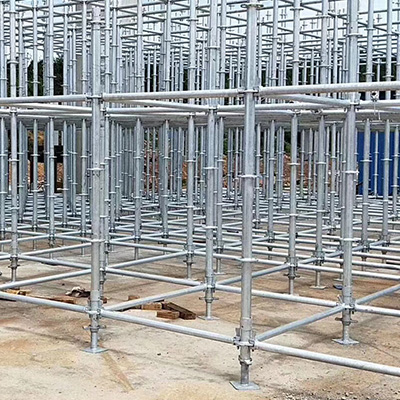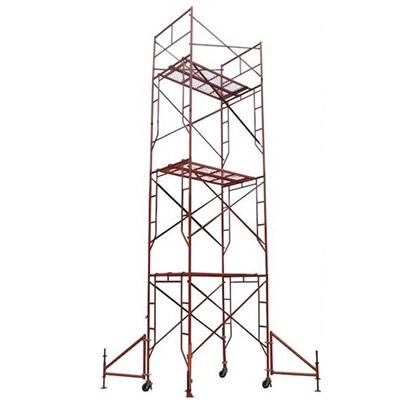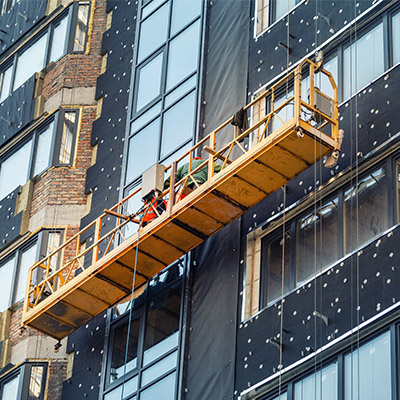Scaffolding, a fundamental component in construction and maintenance projects, plays a pivotal role in ensuring safety and efficiency. When it comes to working on uneven ground, the challenges are unique and demand specialized solutions. In this article, we will explore the intricacies of scaffolding for uneven ground, examining its types, installation, safety measures, benefits, and much more.
Challenges Of Scaffolding For Uneven Surfaces
Working on uneven terrain presents several challenges that need to be addressed to ensure a safe and productive work environment.
- Safety Concerns: Uneven ground increases the risk of accidents and falls, making safety a top priority.
- Stability Issues: Ensuring the stability of scaffolding becomes a critical concern.
- Accessibility Problems: Navigating uneven ground can be challenging, impacting the accessibility of the work area.
Types Of Scaffolding For Uneven Ground
-

One solution to the uneven ground problem is using scaffolding with adjustable base plates. These plates can be fine-tuned to level the scaffold, providing stability even on the most irregular surfaces.
-

Construction steel mobile scaffolds with all-terrain wheels are versatile options for rough terrain. They can be easily moved and adjusted to adapt to the changing ground levels.
-

Suspended Scaffolds
In situations where ground-based scaffolding isn't feasible, suspended scaffolds can be employed. These systems are hung from above, bypassing the uneven ground altogether.
Before erecting scaffolding on uneven or sloped ground, several factors must be considered.
- Site Inspection: Thoroughly assess the terrain to identify potential hazards and challenges.
- Load Capacity: Ensure that the scaffolding can support the required loads.
- Material Selection: Choose materials that are suitable for the specific conditions.
- Installation Process
The proper installation of scaffolding on uneven ground is crucial for stability and safety.
- Foundation Preparation: Create a stable foundation, which might involve leveling or providing additional support.
- Frame Assembly: Assemble the scaffolding frames according to the manufacturer's guidelines.
- Leveling and Bracing: Use adjustable legs and braces to ensure the scaffolding is level and stable.
Safety Measures
Safety should consistently remain a primary concern when working with scaffolding on uneven terrain
- Fall Protection: Implement fall protection measures such as guardrails and harnesses.
- Regular Inspections: Perform routine inspections to identify and address potential issues.
- Training and Certification: Ensure that workers are trained and certified to use scaffolding safely.
- Benefits of Proper Scaffolding
Proper scaffolding on uneven ground offers various advantages.
- Enhanced Safety: Minimizing risks and accidents leads to a safer work environment.
- Efficiency and Productivity: Workers can perform tasks more efficiently with stable scaffolding.
- Cost Savings: Avoiding accidents and delays can result in cost savings in the long run.
Common Mistakes to Avoid
To ensure the success of your scaffolding project on uneven ground, avoid these common mistakes.
- Neglecting Site Assessment: Failing to assess the terrain adequately can lead to safety issues.
- Overloading: Exceeding the scaffolding's load capacity is dangerous and can lead to collapse.
- Skipping Regular Inspections: Neglecting routine inspections can result in unnoticed wear and tear.
- Case Studies
Examining successful scaffolding projects on uneven ground can provide valuable insights into best practices.
Future Trends
The scaffolding industry is evolving, and several trends are shaping its future.
- Technological Advancements: New tools and software are enhancing safety and efficiency.
- Sustainable Scaffolding: Eco-friendly scaffolding materials and practices are gaining popularity.
Conclusion
Scaffolding tower for uneven ground is a specialized field that requires careful planning, attention to safety, and adherence to best practices. By addressing the unique challenges presented by uneven terrain, you can ensure a successful and secure construction or maintenance project.
FAQs
Q: Is scaffolding on uneven ground safe?
A: Yes, it can be safe when the right scaffolding equipment and safety measures are in place.
Q: What types of scaffolding are suitable for uneven ground?
A: Adjustable base plates, mobile scaffolds, and suspended scaffolds are commonly used options.
Q: Why is training essential for working with scaffolding on uneven terrain?
A: Proper training ensures that workers are aware of the unique risks and safety precautions associated with uneven ground.
Q: Are there cost advantages to using suitable scaffolding for uneven ground?
A: Yes, investing in the right scaffolding can lead to cost savings by preventing accidents and delays.
Relevant Information
Deadly Construction Scaffolding Mistakes -- YOUTUBE
Suspended Scaffolds -Multi-Point Adjustable -- OSHA
Types of Scaffolds -- HAZWOPER

